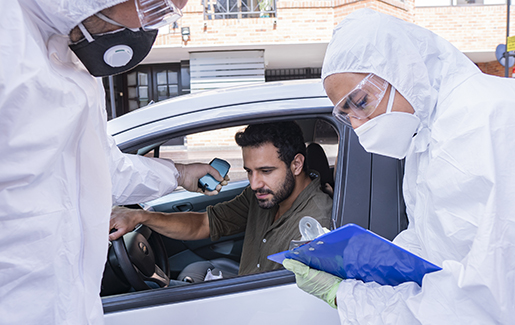 This article first appeared in the Spring 2020 Issue of CompTIA World magazine.
This article first appeared in the Spring 2020 Issue of CompTIA World magazine.
As the 2020 campaign gets into full swing, the ability to run a fair, accurate election is a paramount concern for federal, state and local governments in the U.S. Increasingly, those agencies are exploring emerging technologies such as blockchain, artificial intelligence and biometrics as potential solutions to reduce the risk of cyber interference in elections and help increase the public’s confidence in the democratic process.
Industry leaders agree that these technologies are capable of detecting suspicious activity and safeguarding against intrusion—but that much work needs to be done.
“Given that voting systems are generally deployed on Election Day, the possibility of a zero-day attack is especially disconcerting. It is important that the proper sanity checks, backstops and contingency plans are created and vetted ahead of time,” said Lloyd Danzig, founder and chairman of ICED(AI), a nonprofit organization dedicated to ethical issues in the AI space, and co-chair of CompTIA's Artificial Intelligence Advisory Council.
Artificial Intelligence, Real Solutions
According to Danzig, emerging technology such as artificial intelligence (AI) can be applied on a global basis as well as down to individual voting machines. For example, AI algorithms teamed with biometric verification that leverages machine learning architecture could help prevent voter fraud, Danzig said.
“Pattern recognition could be leveraged to check for signs of vote manipulation or compromised voting machines. The approach can also help bolster the security of voting systems and voter databases,” he said. “There are also ancillary use cases such as AI-powered chatbots that guide voters through the registration or vote casting process.”
In addition, AI could help identify potential attacks in real time through the recognition of patterns often used by foreign actors attempting to find backdoor access into underlying software.
“Biometric verification mechanisms can be trained or bolstered using machine learning. AI can further be used to anticipate and simulate adversarial attacks so that solutions can be implemented before problems actually arise,” he said.
Blockchain Creates Verifiable, Permanent Votes
Meanwhile, blockchain technology could also ensure that the voting process cannot be hacked or tampered with, according to Greg Forst, partner at GoImmutable, a Chicago-based enterprise blockchain consulting firm.
Blockchain is an open, distributed ledger of data containing a cryptographic hash that includes a timestamp and transaction data—making voting data resistant to modification. “Blockchain can help make digital votes immutable, meaning they can't be changed,” Forst said. “It could also enable remote voting and make voting more accessible to more people.”
An example of this is Voatz, a mobile elections platform that allows military personnel overseas (and others) to vote remotely, Forst said. Founded in 2014, Voatz has been used or piloted in several states including Utah, Oregon, Colorado and West Virginia.
“Digital identities for the voter and device, plus securing the digital votes on the blockchain makes voting more accessible—and virtually unalterable,” he said.
To tamper with an election, hackers would need to hold 51% of the vote ledgers on the blockchain by hacking multiple, disparate infrastructures, then hack cryptography on each node infrastructure and do so in a very specific sequence in order to not raise any red flags within the blockchain network. “That’s virtually impossible,” Forst said.
But for a blockchain voting system to work, a strong, unassailable system needs to first exist to ensure proper voter identification, said John Souza, founder of Kingsland University, an Atlanta-based blockchain educational institution. For example, a form of digital ID will need to be created and stored in a centralized database. However, verifying a digital ID is not without its risks—at least right now.
“How do we know that the vote cast on a smart phone was actually cast by you? Some systems are trying to use biometric data as proof of identity, which opens up another can of worms in terms of personal privacy, centralized control of biometric data, and voter tracking and targeting. Not all governments have the best interests of their citizens at heart, and much of this data could be used to target anyone who voted against the prevailing victor,” Souza said.
The Votes Are In: Emerging Tech Opportunity Will Increase
To date, many emerging technologies have been used in test environments and small-scale deployments in voting systems. As the market matures and innovation continues, expect improved results, more benefits and accelerated adoption.
“The degree of threats posed by these technologies is directly proportional to the extent to which its operators consider them infallible,” Danzig said. “Generally speaking, anywhere that AI can be used by the ‘good guys,’ it can also be leveraged by the ‘bad guys.’ It’s up to all of us to ensure we have the proper protection—and the technology—to preserve and protect democracy.”
Emerging tech won’t change elections overnight—nor should it, adds Forst. “Implementation needs to be slow and deliberate. Voting is crucial to a society and this should be vetted, tested and implemented in very methodical manner.”
Read the latest issue of CompTIAWorld magazine.

 Add CompTIA to your favorite RSS reader
Add CompTIA to your favorite RSS reader

